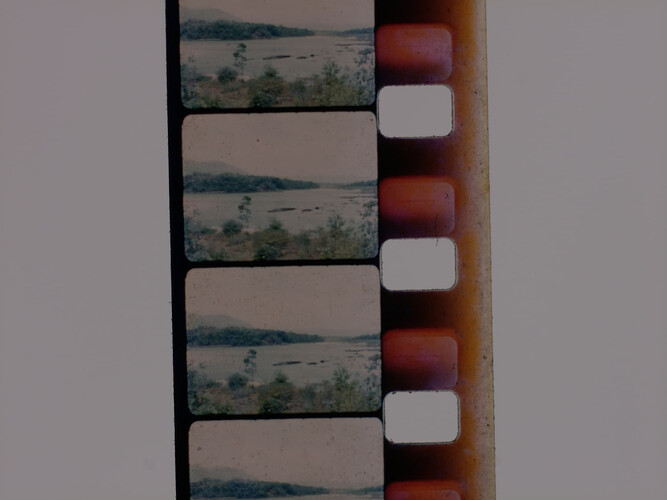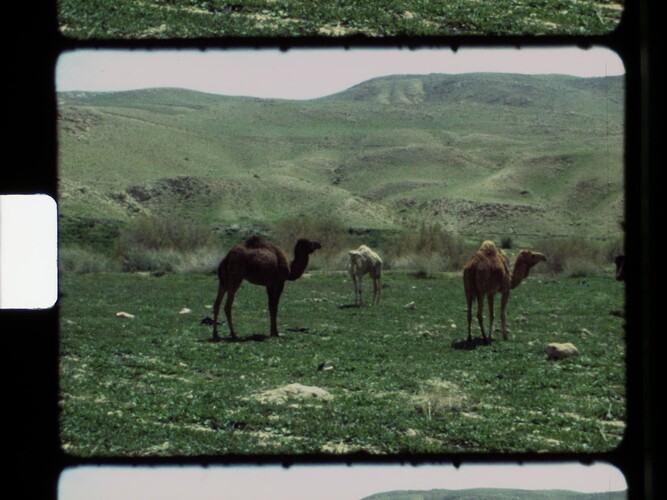@jankaiser - many thanks for the feedback about the timing of the capture. That gives a good reference for others to compare!
Well, it’s an issue I am still working at with my scanner/color science. I currently approach the whitebalance similar to your approach, namely setting the whitebalance on the empty film gate. While this seems to be a decent approach, it probably would be better to base the whitebalance on some grey image area in the actual footage. One reason: in the old days, Super-8 did know only two color temperatures - daylight (realized with an in-camera filter) and tungsten (without filter). So already when taking the footage, you most probably did not have the “correct” color balance for the scene. For example, I have seen scenes taken with flourescent lights - these have quite some interesting color variations…
Aesthetically, one could argue that this is one of the features of Super-8 film stock and you want to reproduce it in the digital copy. In this case, the whitebalancing of the empty frame is a valid approach. Or: you assume the opposite position and aim at not having these color shifts, caused by the technology at hand in those old times. In this case, you need to base the whitebalance on the scene content (find some grey area in the scene an color-balance this).
Now, if I use the empty film gate approach, I do see occationally a drift of very white areas (typically clouds in the sky) toward the magenta color with Kodachrome film stock. You can notice this magenta sky in a scan Pablo (@PM490) posted in his SnailScanToo or 2 thread (reproducing it here to spare you the search):
Notice that the empty sprocket area is more or less whitebalanced, but the sky in the frame looks kind of pinkish?
I have several ideas where this might come from:
- the camera sees in these areas basically the support material of the film stock. This should be absolutely clear, but of course, this is not the case. The support material certainly acts like a little color filter and this could potentially introduce the color shift in bright area I am seeing.
- the exposure fusion I am using (“Mertens”) is not really color-neutral. It exagerates local color variations and has the potential to introduce slight color shifts, as it is a non-linear process.
- some other reason, like a weird interaction between the spectrum of my white-light LEDs (but Pablo’s system “sees” it too) or the conditions the film was stored, or whatever…
So it’s interesting to me that you did not notice such a phenomene in your Kodachrome scans.
This might be related to the different way you create your final frame (raw capture, processing in Lightpath, no exposure fusion). Exposure fusion will pass through color differences even in very bright areas. On the other hand, capturing just a single 12-bit raw is demanding in terms of dynamic range - you either have more noise in the dark parts of your image, or very bright image areas might blow out. In the later case, these image areas would be trivially “white-balanced” (i.e. loose their color).
From the description of your setup, I think this is not the case. However, later on, you pipe your raw data through your light room profile, expanding with your Shadow and Highlight settings the image definition of the highlights and shadows. As a side effect, this operation will squash the tonal range of colors in these image areas, maybe to such an extent that any magenta cast is not noticable anymore?
Here’s an example from my scanner, showing the same effect:
If you use your color picker on the sprocket area of this 8-bit scan, you should measure around 245 in all three color channels. That is how I set whitebalance and exposure. Doing the same on the overcast sky, you will find values like R: 207, G: 198 and B: 201, which is a slight magenta cast, or values like R:204, G:195 and B:198, which is a kind of redish one.
Sorry for this long technical detour - it’s just a question I am researching at the moment where I do not have an answer yet. I am tending to think that it is a Kodachrome-issue, but I am far from being certain about this. That’s the reason I asked you whether you have noticed such an effect. In any case, thank you for your feedback!

